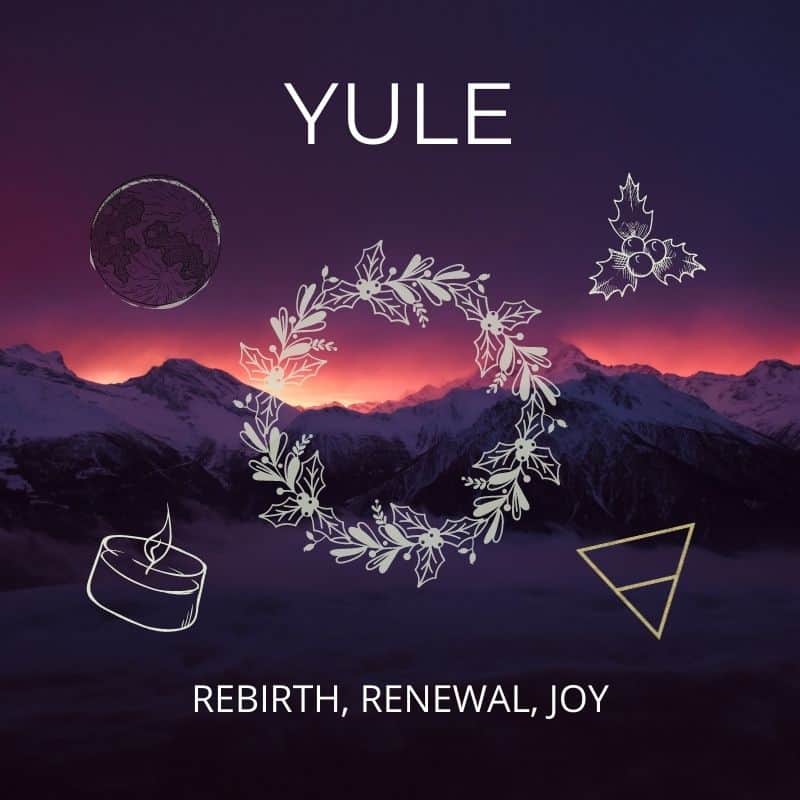
Dates: 2023: December 21
The days grow shorter, and the nights grow longer. Winter gains strength. The Wheel turns and we arrive at Yule – the Winter Solstice. The shortest day of the year.
Yule is a 12-day period of reflection and celebration that begins at the winter solstice and continues through the end of the calendar year (December 31st).
Yule is the oldest pagan festivals, from which most Christmas customs derive.
What Yule Represents
Get weekly moon wisdom delivered to your inbox every moon phase!
Yule celebrates the return of the sun.
The Winter Solstice is the shortest day of the year. At this point of the year, the sun is at its lowest point in the horizon at noon, and the period of daylight is at its shortest.
Each day after the winter solstice, the days will grow gradually longer as the sun’s path arcs higher and higher in the sky.
Yule is a time for celebrating light, gift-giving, gathering with family and friends, and celebrating the “rebirth” of the sun.
Personally, Tracy and I reflect on the end of the previous year, and prepare for the start of a new year and a new cycle.
For us and our practice, Yule marks the first spoke (or beginning) of the pagan Wheel of the Year (although some witches and pagans consider Samhain to be the beginning of the year).
Keywords: Hope, expectation, joy, peace, gathering, family, rebirth, renewal, light.
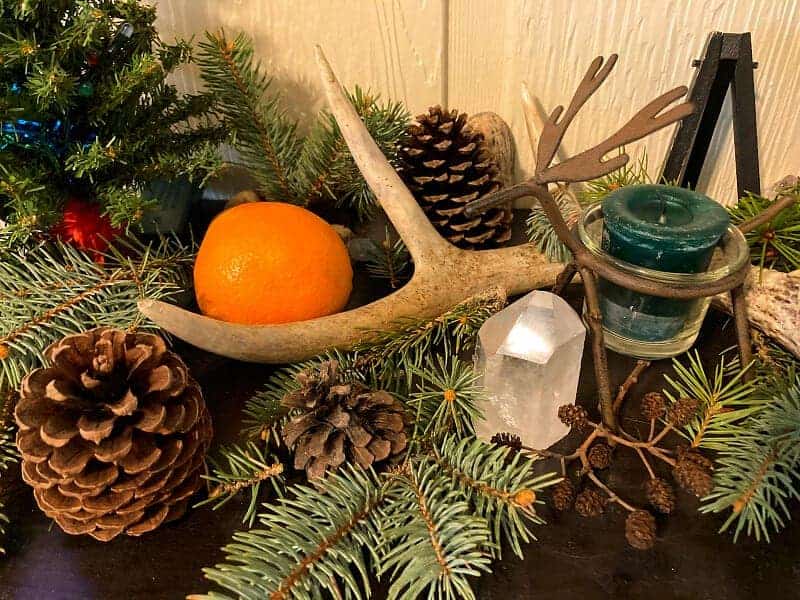
Yule Correspondences
Moon Phase: Yule corresponds to the New Moon, a time to set intentions and make new starts.
Element: Earth
Colors: Red, green, gold, silver, blue, and white are all colors to use for candles and decorations this time of year.
Crystals/Stones: Clear quartz, snow quartz, obsidian, citrine, orange calcite, fire agate, fire opal, pyrite, and red jasper are my favorite crystals to put out and work with this time of year.
Black moonstone is another crystal that I work with during each new moon, but also at Yule. Black moonstone is a crystal of intention, hope, manifestation, and new beginnings.
Herbs: Peppermint, cinnamon, clove, and ginger are the herbs I work with at Yule – especially in cooking, teas, and other herb-crafts.
Incense/Essential Oils: Fir, pine, cedar, juniper, cedarwood, peppermint, cinnamon, clove, and orange.
Other Magickal Earth Items: Evergreen boughs, pine cones, holly leaves/berries, ice/snow, yule log, poinsettia, reindeer, citrus fruits.
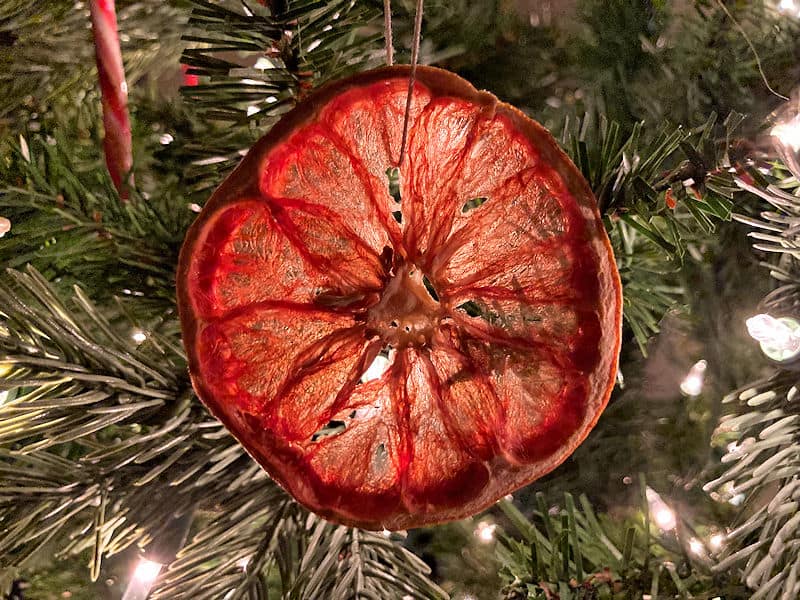
Yule Rituals: How To Celebrate Yule
Tracy and I still celebrate Christmas on December 25, as that is the holiday we grew up with.
For us, Christmas is more of a secular, cultural holiday than a religious one – and we have no problem with immersing ourselves in the festivities of the holiday season.
Besides, many of the holiday symbols and customs we associate with Christmas today were borrowed from much earlier, pagan practices.
We have incorporated a few of our own spiritual, mindful practices during the Yule season.
Create A Yule Altar
In addition to our Christmas tree and decorations, we set up a Yule altar.
Our altar includes red, green, and white candles, a deer antler, a mini, artificial Christmas tree, evergreen boughs (Douglas fir, cedar, juniper, pine), pine cones, sprigs of holly, and crystals that correspond to Yule.
We also place solar symbols on our altar at Yule. I usually place a fresh orange (representing the sun) on top of a holly leaf as a nod to the story of the Oak King defeating the Holly King at the solstice, ushering in the new year and the strengthening sun.
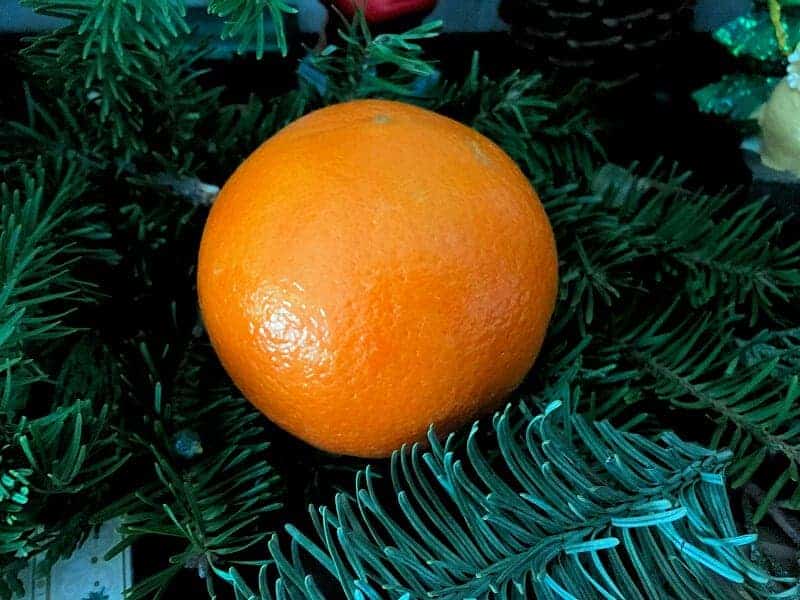
Decorating For Yule
Evergreen boughs, garland, and wreaths are perfect Yule decorations, as well as sprigs of holly and mistletoe.
A Christmas (or Yule) tree is the centerpiece of our home at this time of year.
Because the nights are long, we light a lot of candles – particularly white, but red and green are also favorite colors.
Craft A Yule Log
There are two approaches to enjoying a Yule Log, and that depends on whether or not you have a wood-burning fireplace. If you do, simply pick a log that “calls to you” and burn it on the Solstice.
You can burn a specific type of wood that corresponds with your intentions for the Yule season and new year.
For those of us who do not have a wood-burning fireplace, then the next best thing is to forage for a log of workable size, and drill holes in it to stick candles into.
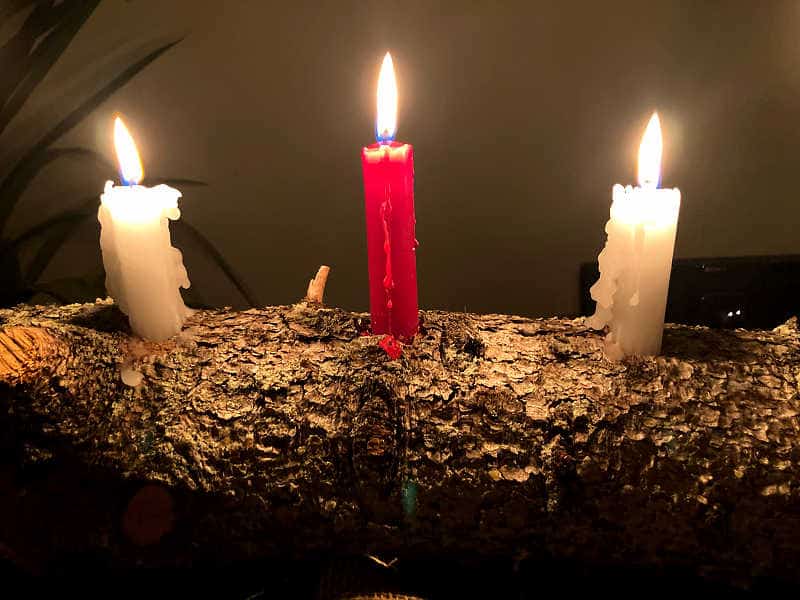
This year, we used a piece of cut spruce from a tree that blew down in our yard during a windstorm over the summer. I didn’t have a large enough drill to fit the diameter of a taper candle, so I drilled a bunch of smaller holes to create large ones.
Traditionally, red (for the Holly King), green (for the Oak King), and white (for the cold) candles are used. However, you can use other colors that suit the meanings or intentions that you set during the Yule season. For example, yellow or gold can represent the returning sun.
In our case, on-going pandemic supply chain issues meant that we had to settle for just white and red candles this year.
Solstice Crystal Ritual
On the night before the Winter Solstice, I place a clear quartz crystal on the windowsill of our East-facing window. As the sun rises on the solstice, the crystal catches the very first rays of light from the reborn sun.
I then use this crystal for intention work during the Yule season.

Brew A Simmer Pot
You can brew a simmer pot any time of year, but there is no better way to fill your home with the aroma of Yule than to fill a small crock pot or pan with fruits and spices!
We made a simmer pot with oranges, apples, cranberries, rosemary, cinnamon sticks, cloves, and bay leaves.
Set intentions as you place ingredients into the pot. For example, oranges represent the returning sun. Cinnamon adds power to your intentions. Cranberries represent abundance, courage, and action. Bay leaves are often burned at new moons and to make wishes. Cloves are a healing herb that offers a sense of safety and protection.
Simply fill a pot with water and simmer under low heat for as long as you’d like. You can reheat the simmer pot up to 3 days.
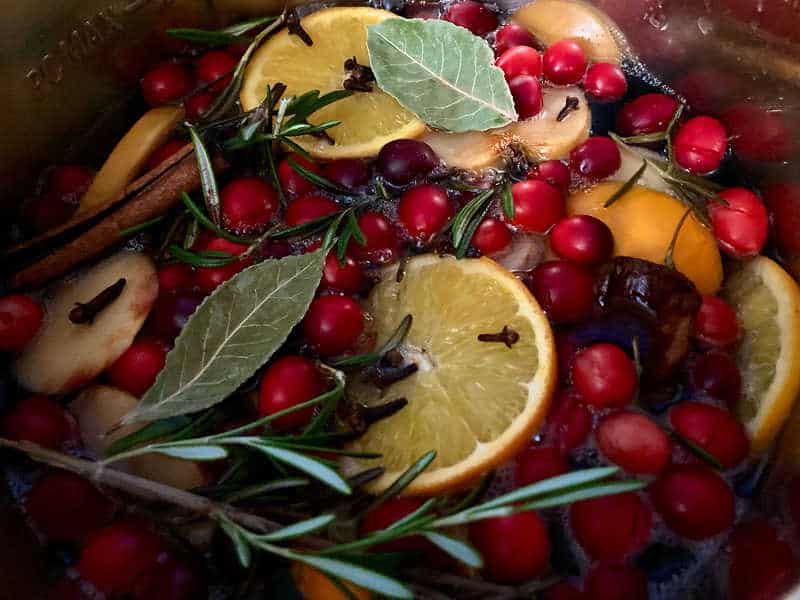
Set Intentions For The New Year
Most of us do this during the New Year holiday anyways, but I view the Winter Solstice as the start of the new year since it’s the beginning of a new solar cycle.
Yule is the time to set intentions for the coming year. It’s a great time to commit or re-commit to a goal, or change in your life.
Be sure to write these intentions down (on paper or bay leaves) and either burn them, or place them inside a bottle, box, or cauldron (with lid) with manifestation crystals like clear quartz, pyrite, citrine, green aventurine, or green chert.
Giving
Yule is a season of giving. If you are able, exchange gifts with family and friends, but be sure to also remember those who are less fortunate.
Tracy and I always donate to the local food bank and place toys in the Toys For Tots bin.
Gathering
Yule (and the adjacent holidays) are a time to gather with family and friends for food, fun, and catching up.
Make Solstice Candles
Tracy and I like to make simple Solstice candles that we put intentions into and burn on the Winter Solstice.
You can burn them at sunrise on the day of the solstice. Or you can light them in the evening at sunset. Or anytime that is more convenient for you.
Don’t get hung up on making the ritual “perfect” or “correct”. Simply lighting this candle at any time and reflecting on your intentions for the coming year is more than enough.
To make the candle:
1 – Cut an orange in half and carefully scoop out the fruit, leaving only the peel.
2 – Pour a small quantity of candle wax almost to the top of the orange half. Be sure the orange half is supported so that it doesn’t tip and spill the wax as you pour it. Place a wick in the center.
If you do not have candle-making supplies, you can use a tealight or the end nub of a taper candle.
3 – Sprinkle some cinnamon, place a clove bud, and/or add any other herbs/crystals you wish to add to support your Solstice intentions.
4 – When the wax has hardened, simply light the candle and let it burn until it extinguishes itself. (Be sure to practice fire safety, keep away from children/pets, and burn in a heat-safe, fireproof container within sight.)
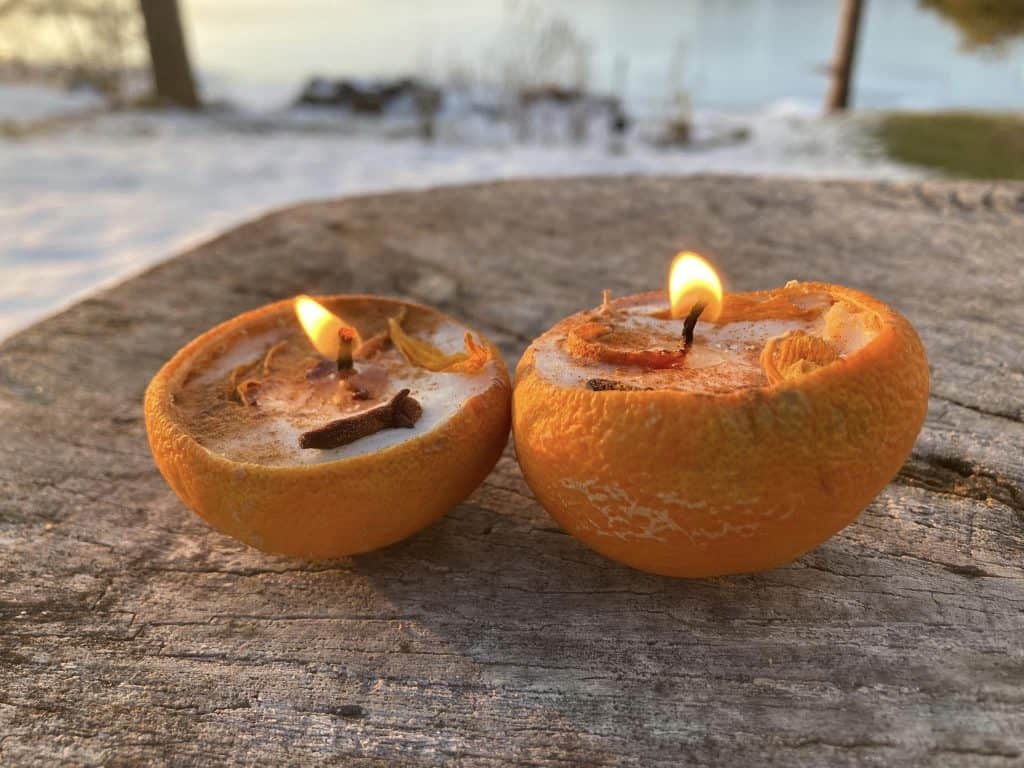
Phenology
Phenology is the study of cyclical patterns in the natural world around you. As I celebrate each holiday on the Wheel Of The Year, I take note of the changes in the environment around me.
What flowers (if any) are blooming at Yule? What birds or other animals are active? What time does the sun rise and set? What are the temperatures? Take note of what is happening outside your window!
While no flowers are blooming in our frozen, sometimes snow-covered garden this time of year, migratory ducks and geese are active on the river outside our home. We frequently see bald eagles hunting.
